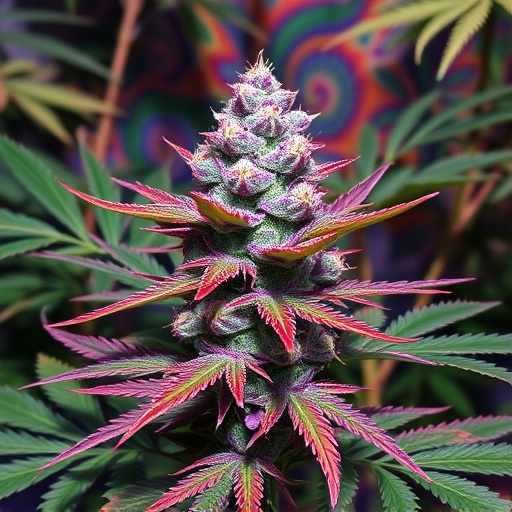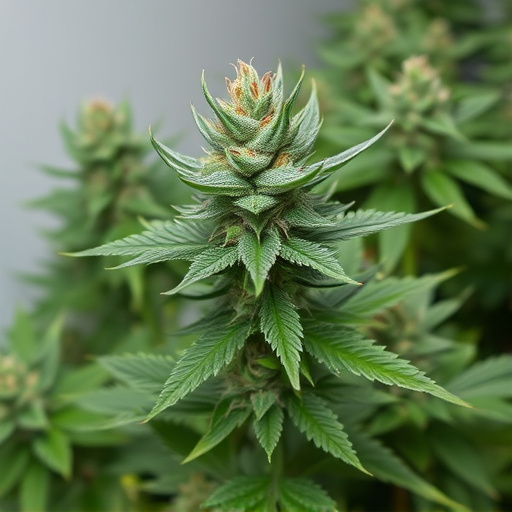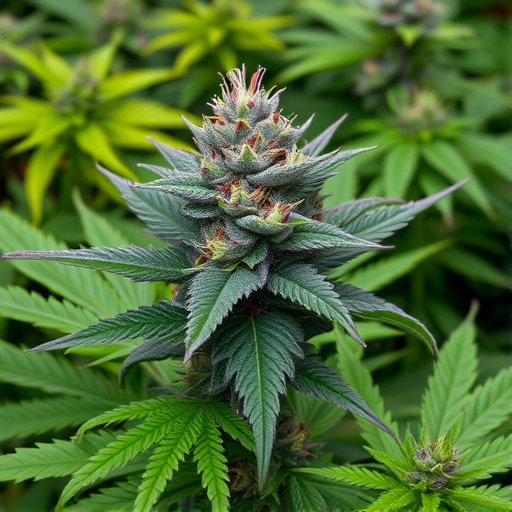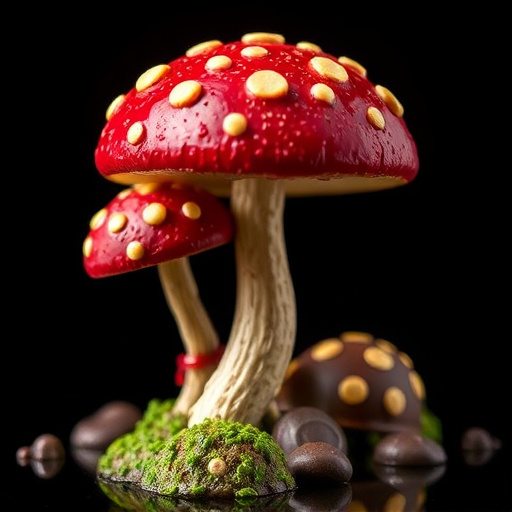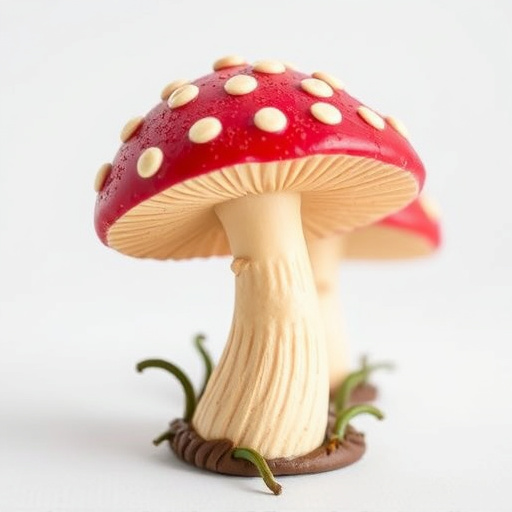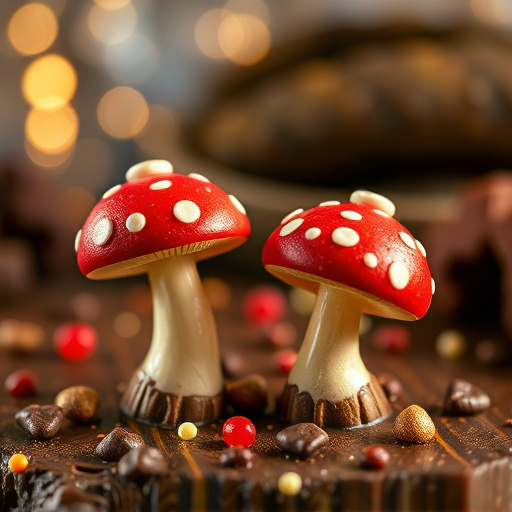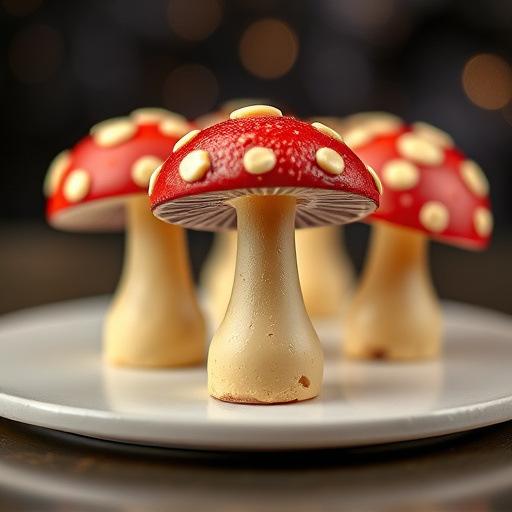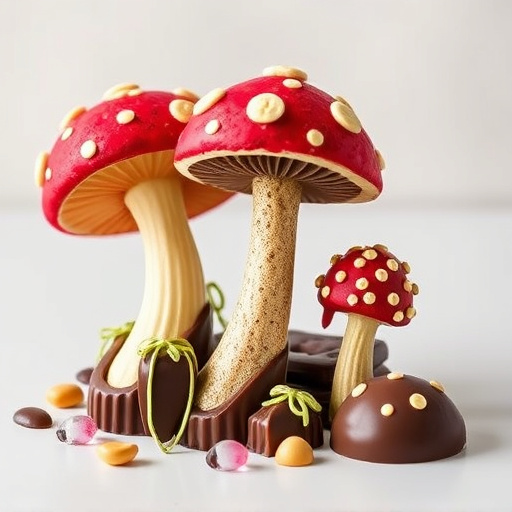"The Science Behind Magic Mushroom Chocolates explores how psilocybin and psilocin, compounds found in mushrooms, create altered states of consciousness through brain receptor interaction. These semi-synthetic substances, along with other mushroom components like ergolines and triterpenes, offer potential therapeutic benefits for depression and anxiety. Chocolate infusions deliver these compounds in a palatable way, unlocking creative and spiritual experiences while providing a new avenue for sensory exploration."
“Unveiling the intriguing world of High-Potency Magic Mushroom Chocolates, this article delves into the captivating intersection of ancient remedies and modern gastronomy. We explore the science behind magic mushroom chocolates by dissecting the key compounds, psilocybin and psilocin, and their profound effects on the brain. From historical roots to contemporary applications in psychology, we navigate the landscape of the science behind magic mushroom chocolates. Additionally, we uncover why chocolate serves as an exceptional delivery system, delve into bioavailability, and highlight various encapsulation methods. Join us as we balance potential benefits with safety considerations, shedding light on the fascinating realm of psychedelic therapies.”
- The Compounds and Their Effects: A Deep Dive into Psychoactive Molecules
- – What are the key compounds in magic mushrooms? (e.g., Psilocybin & Psilocin)
- – How do these compounds interact with our bodies, particularly the brain?
The Compounds and Their Effects: A Deep Dive into Psychoactive Molecules
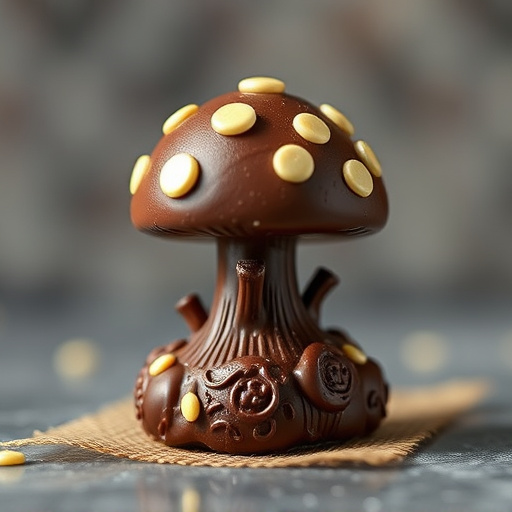
The Science Behind Magic Mushroom Chocolates delves into the fascinating world of psychoactive compounds found in magic mushrooms, specifically psilocybin and psilocin. These molecules are responsible for the unique psychological effects associated with mushroom-induced altered states. When consumed, psilocybin is metabolized by the body into psilocin, which binds to serotonin receptors in the brain, leading to changes in perception, mood, and consciousness.
Research has shown that these compounds can induce a range of experiences, from heightened creativity and spiritual insights to euphoria and altered time perception. The effects are often described as profound and transformative, leaving users with lasting personal growth and improved mental well-being. The science behind magic mushroom chocolates explores how the controlled delivery of these compounds through chocolate form can offer a more accessible and palatable way to experience their therapeutic benefits while minimizing potential negative impacts.
– What are the key compounds in magic mushrooms? (e.g., Psilocybin & Psilocin)
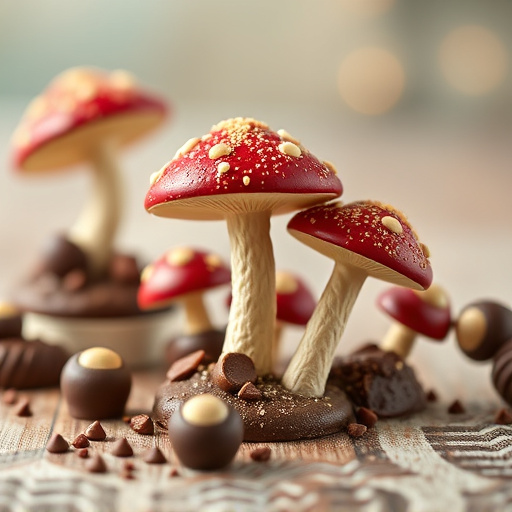
The Science Behind Magic Mushroom Chocolates begins with understanding the key compounds found in magic mushrooms, such as Psilocybin and Psilocin. These are psilocybin’s active metabolites, responsible for the mushroom’s psychoactive effects. When consumed, psilocybin is converted into psilocin within the body, triggering a range of mental and emotional changes. Research has shown that these compounds interact with our brain’s serotonin receptors, specifically binding to the 5-HT2A receptors, which play a crucial role in perception, mood, and consciousness.
This interaction leads to altered states of consciousness, often characterized by enhanced creativity, spiritual experiences, and altered time perception. Beyond psilocybin and psilocin, magic mushrooms also contain other compounds like ergolines and triterpenes, which contribute to their unique effects. The Science Behind Magic Mushroom Chocolates involves studying these compounds and their interactions, enabling the creation of innovative products like chocolate treats infused with these psychedelic compounds.
– How do these compounds interact with our bodies, particularly the brain?

The compounds found in magic mushroom chocolates, primarily psilocybin and psilocin, have a fascinating interaction with our bodies, especially the brain. These substances are considered semi-synthetic because they naturally occur in certain types of mushrooms but can be enhanced and incorporated into edible forms like chocolates. When consumed, psilocybin is converted by the body into psilocin, which acts as a serotonin receptor agonist. Serotonin is a neurotransmitter that plays a crucial role in mood, cognition, and perception. By binding to these receptors, psilocin induces altered states of consciousness, enhanced creativity, and profound emotional experiences.
The brain’s endocannabinoid system also comes into play when consuming magic mushroom chocolates. This system regulates various physiological processes and is involved in appetite, memory, and pain perception. The compounds in these treats can interact with endocannabinoid receptors, further contributing to the unique sensory and cognitive effects experienced by consumers. Scientific research suggests that psilocybin-assisted therapy has potential benefits for mental health conditions like depression and anxiety, offering insights into the brain’s complex functioning and its capacity for transformation.
In exploring the science behind high-potency magic mushroom chocolates, we’ve delved into the powerful compounds psilocybin and psilocin. These naturally occurring psychoactive molecules not only offer potential therapeutic benefits but also present an intriguing avenue for exploration in the realm of mental health and wellness. As research continues to evolve, understanding their effects on the brain can lead to innovative applications in treating various conditions. The future of magic mushroom-based products looks promising, with further studies potentially unlocking new insights into these ancient remedies’ modern potential.
